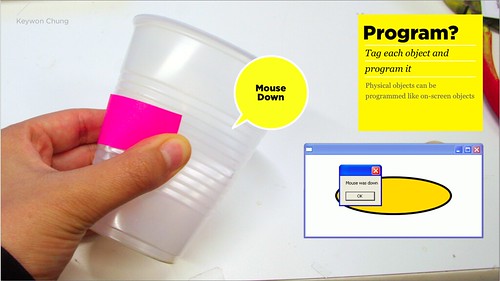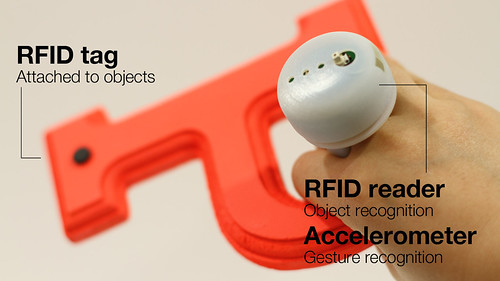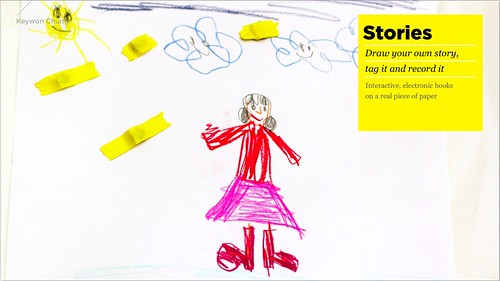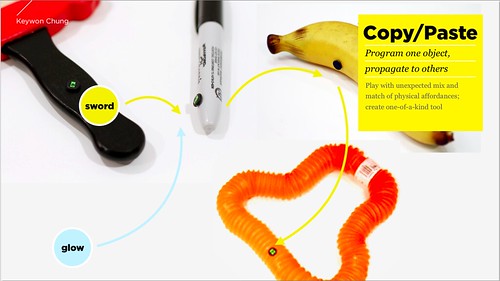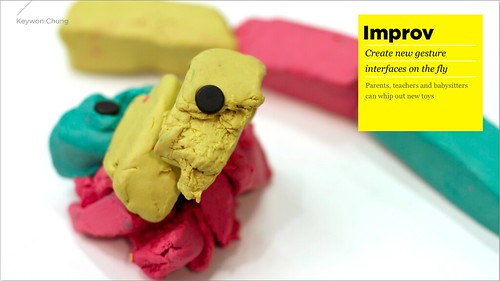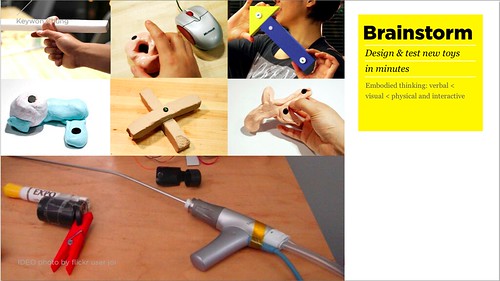OnObject Keywon Chung, Michael Shilman, Chris Merrill and Hiroshi Ishii
OnObject is a small device user wears on hand to program physical objects to respond to gestural triggers.
Attach an RFID tag to any objects, grab them by the tag, and program their responses to your grab, release, shake, swing, and thrust gestures using built in microphone or on-screen interface.
Using OnObject, children, parents, teachers and end users can instantly create gestural object interfaces and enjoy them. Copy-paste the programming from one object to another to propagate the interactivity in your environment.
Application Demos
Want to teach children the alphabets? Attach an RFID tag to a letter, and program it.
Want to role play? Attach an RFID tag to a toy, and program it.
Want to turn your sharpie into a Zelda sword? Tag the sharpie and program it. Copy paste the programming between objects.
Children playing with OnObject
System Overview & Demonstration
Motivation
How can we program physical objects to have multiple states like on-screen objects?:
Technology
OnObject uses a combination of 13.56MHz high frequency RFID sensor and one triple-axis accelerometer:
Gesture recognizer has been developed to provide an API with object ID, gesture ID, and button states:
In any given application, a subset of these eight gestures can be used to trigger audio, visual or data response:
Novel Interactions
Record voices into stuffed animals and props in the room for improvised role playing and storytelling:
Children can create interactive storybook by drawing their own story, tag them (attached with yellow tape below), and record the voices for each character and scene:
Copy and paste the programmed behavior from one object to another: Use a pen as a sword in a game, and make it glow by copy pasting from a lamp as well:
Designers, parents and teachers can sculpt, assemble and create new gestural toys out of LEGO blocks or clay in seconds -- tangible thinking is highly encouraged by masters of innovation including IDEO:
Contact: Keywon Chung keywon@media.mit.edu
